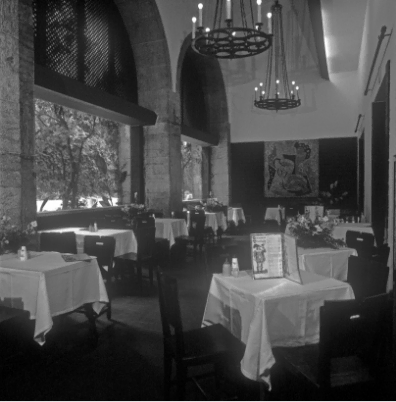Lisbon’s past,
history
and Glory
Trindade is considered the most ancient and beautiful Portuguese brewery.
. Located in what was, for eight centuries, the Convent of the Holy Trinity, ruled by the Trinity Friars for the Redemption of Captives (their main mission being the rescue of Christian prisoners at the Moors’ hands).
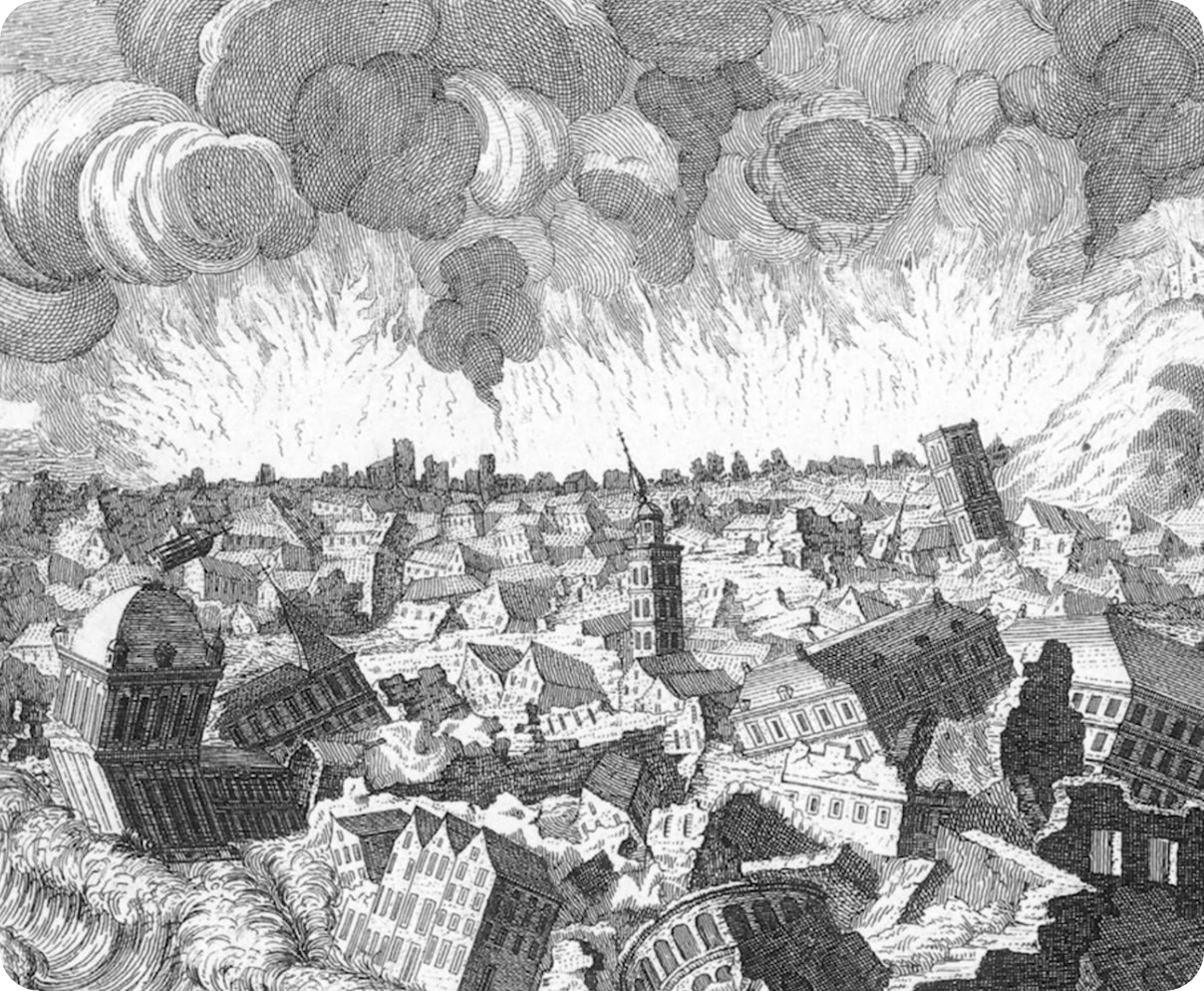
Trindade,
full of History
and stories
The convent was founded in the late 13th century (1294) and is in itself a symbol of resilience. In 1704, it burned down to the ground and, rebuilt, survived the Great Lisbon Earthquake (1755) to be, once again, destroyed by another fire (1756). In 1834, the extinction of the religious orders dictated its closure.
After being decommissioned, it was bought the next year by Manuel Moreira Garcia, a Galician industrialist who turned the convent’s church, cloister and refectory into a beer factory, the Fábrica da Cerveja da Trindade and in 1836 Cervejaria Trindade was established.
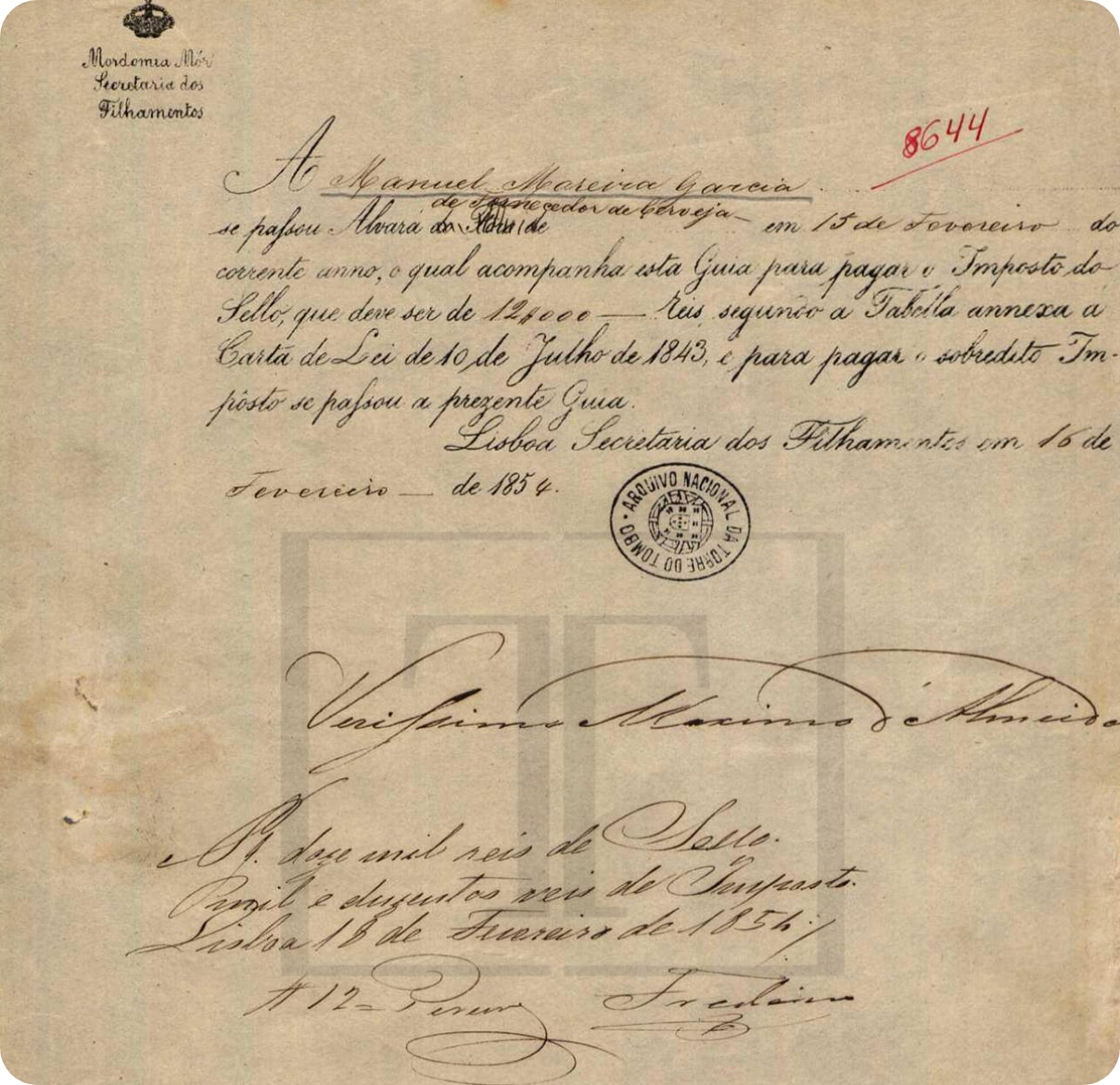
Trindade
Old Trindade, new Trindade
and Modernist Trindade.
Manuel Moreira Garcia renovated the space and made the most of the old convent’s painted tile panels (azulejos).
In 1863, he commissioned Luís Ferreira, the art director of the ceramics factory Fábrica de Cerâmica Viúva Lamego, more painted tile panels, which in accordance with the owner’s eccentric tastes, represented allegories of the Four Elements and the Four Seasons (missing Winter that was removed some time later to allow the reopening of an old door towards the cloister).
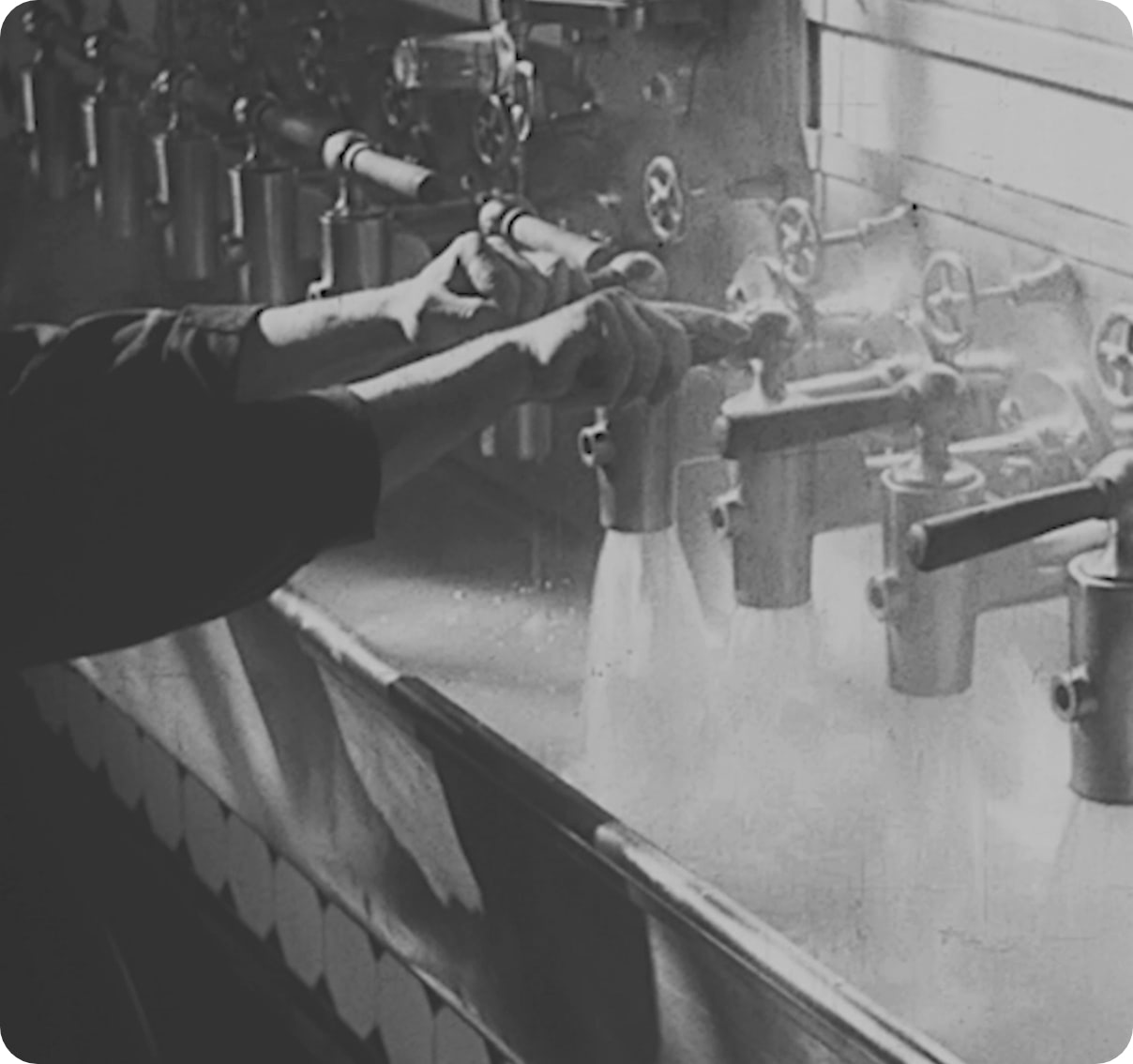
Trindade
opens to
the world.
In 1934, the Portuguese company Central de Cervejas bought both the factory and the brewery, which had become a popular drinking spot and restaurant to Lisbon’s nightlife: actors, musicians, artists, journalists but also politicians, intellectuals, writers and a very diversified and multicultural crowd, while also welcoming families, business people, university students, foreigners and locals. While celebrating its 150th anniversary, Lisbon municipality recognized Trindade as part of Lisboa Cultural Heritage. In 1997, the ancient convent that houses the Trindade building was officially declared City of Lisbon’s Cultural Heritage of outstanding historical and cultural importance. At the end of 2017, Trindade was purchased by the Portuguese company Grupo Portugália Restauração.
Timeline
1294
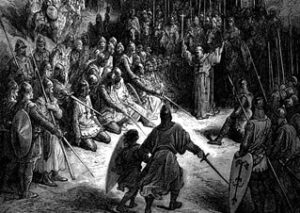
A journey that begins.
Foundation of one of the largest and most important convents in Lisbon – the Santíssima Trindade – by Frei Martim Anes, Frei Estêvão de Santarém and Frei João Franco. Its monks received the name of Frades Trinos da Redenção dos Cativos, so designated because their vocation was to rescue prisoners from the Moors.
1325
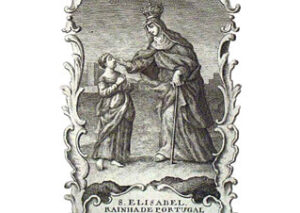
Queen Saint Elizabeth, consort to King Denis, inaugurates with great pomp the new building of the Convent of Santíssima Trindade, to whose construction she made great contributions.
1498
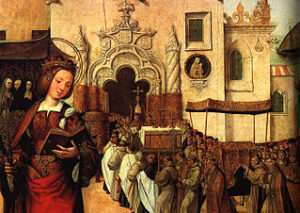
Frei Miguel Contreiras, monk of Trindade’s convent and confessor of the Queen Eleonor of Lancaster, consort of King John II, establishes with royal support the Santa Casa de Misericórdia de Lisboa.
1542

On Good Friday, in a chapel of the Convento da Trindade that was later the little church of Chagas, Luís de Camões sees for the first time Dona Catarina de Ataíde, with whom he falls madly in love and who he sang in his poems.
1708
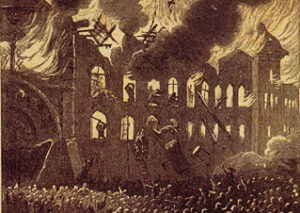
Destruction of the Convent by a violent fire
1755
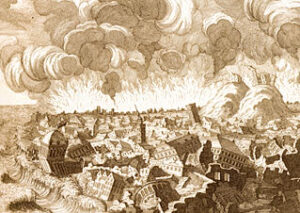
New destruction, almost entirely, by the terrible earthquake in Lisbon that hit very hard this hill of the city. The popular expression “Caiu o Carmo e a Trindade” (Carmo and Trindade fell) was born from this event, referring to the collapse of the two convents with that name, to describe a great tragedy.
1766
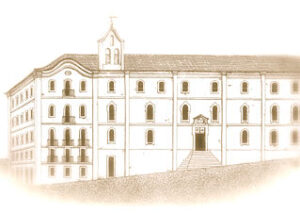
Partial destruction of the building by another fire, shortly after the reconstruction following the earthquake, and only 13 days after reopening. Only the Church, the Refectory and the Library survived. Further reconstruction.
1834
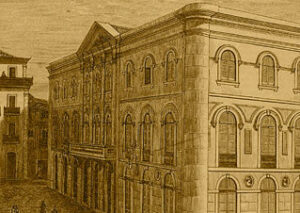
Extinction of Religious Orders in Portugal and demolition of part of the convent, sacrificed to the new urbanization plan for the city of Lisbon. At the end of the year, Manuel Moreira Garcia, an industrialist of Galician origin, began to install a brewery in the precarious premises there.
1836
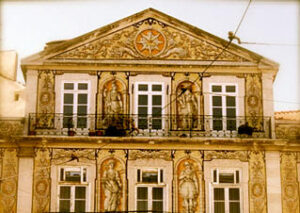
Lease of two plots of land and the ruins that were there by Manuel Moreira Garcia. Here he built the building where he set up the Trindade Beer Factory, taking advantage of the remaining walls of the Convent and decorating all the exterior facades with tiles from its demolition. On an adjacent lot, he built his house that still exists today.
1840
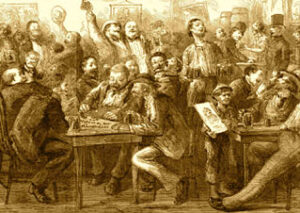
Opening of the beer direct sales counter to the public at Cervejaria Trindade, installed in the first room of what remained of the Trinos friars’ refectory.
1854
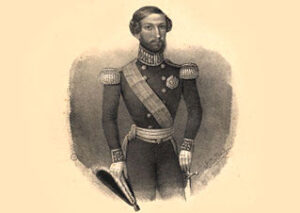
On 15 February, His Majesty Ferdinand of Saxe-Coburg-Gotha, regent in the name of King Pedro V, his son, signs the Alvará “giving Manuel Moreira Garcia the favor of taking him as a supplier of beer to His Real Caza , with this title being able to place the Royal Arms on the frontispiece of its establishment, Fábrica de Cerveja da Trindade.”
1863
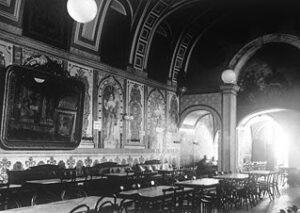
Wall cladding of the former Frades Trinos refectory with tiles painted by Luís Ferreira, the “Ferreira das Tabuletas”, with Masonic-inspired motifs. Subsequently, the establishment was extended to the next room, which Ferreira would decorate with beautiful panels of the 4 elements and the Seasons, while the painter Vale covered the ceilings and arches with heraldic motifs.
1876 / 1920
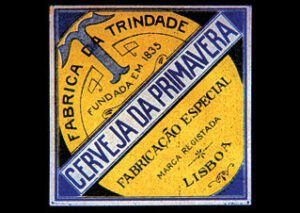
Domingos Moreira Garcia succeeds his father. He and his heirs run the Trindade Beer Factory for 44 years.
1920 / 1932
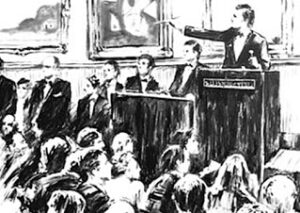
On the death of Domingos Garcia, the main employees of the Factory and the Brewery formed a company to operate the business with the support of the capitalist José Rovisco Pais, who would eventually become its sole owner. In 1932, with the death of Rovisco Pais, who bequeathed all his assets to charities, the Trindade Factory was put up for public auction.
1934
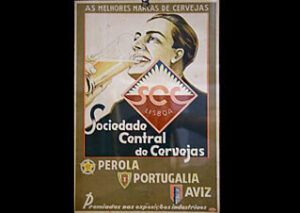
A century after its foundation, the Fábrica and the Cervejaria da Trindade become the property of a brewing consortium. The following year, the Factory closed its activity, and the operation of the Brewery was handed over to the Sociedade Central de Cervejas, where the former Brewery Factory was located at the time. Portugália.
1946 / 1948
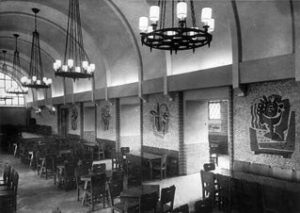
Expansion and improvement works at the Trindade Brewery. The new hall was created in the space once occupied by the convent church and later, by the brewery. The small room attached to it is built in the gallery of the old cloister. The walls of both rooms are decorated by Maria Keil with Modernist stone mosaic panels, inspired by the Lisbon pavement (Calçada).
1959
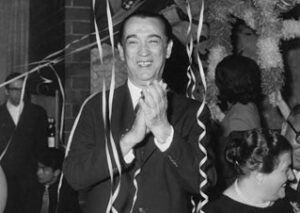
Adaptation of part of the Brewery to a typical quality restaurant, Restaurante Folclore, which operated independently until 1972.
1974
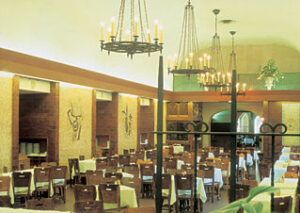
Reestablishment of the connection between the different rooms, after the closure of the Folclore Restaurant, returning the Brewery to the configuration that had been assigned to it during the major works of the 1940s.
1986
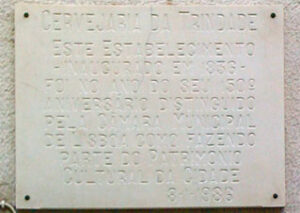
Cervejaria Trindade celebrated 150 years of activity, the year in which the Lisbon municipality also decided to include it in the Cultural Heritage of the City.
1987

The Secretary of State for Tourism awarded Cervejaria Trindade the Medal of Tourist Merit in the Silver degree, for providing services relevant to Portuguese tourism.
1997

Recognition of the Trindade Brewery as “Heritage of Relevant Historical-Cultural Value”, by the Direção Geral de Turismo.
1998
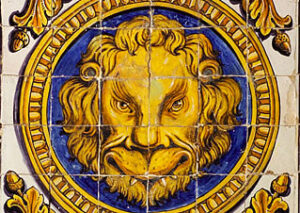
Cleaning and conservation of the Ferreira das Tabuletas tiles and intervention in the decoration of the two tile-covered rooms, in which an attempt was made to restore the characteristic style of the cafés and breweries of the first half of this century, a time when Trindade decisively asserted itself in the city.
2007

Reformulation of the brand image, menu and communication of Cervejaria Trindade
2008
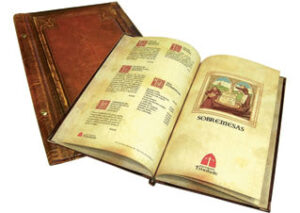
Cervejaria da Trindade returned to the ownership of the Grupo Portugália Restauração.
2021
‘A Trindade’ closes for restoration and remodeling works. New interior decoration.
2022
Brand reformulation, it is now called just ‘Trindade’. New colors, new market positioning, new Executive Chef, one new room and new decoration.
THE ATRIUM
Today’s main access to Trindade, it’s part of what remains of the old convent. It is lavishly decorated with Masonic-inspired painted tiles by artist Luís Ferreira.
This hall displays the most interesting of the painted tile panels which reproduce Masonic symbols and allegories at Trindade. Due to its rarity and probable uniqueness, these Masonic elements inspired ’azulejos’ are considered national Portuguese heritage:
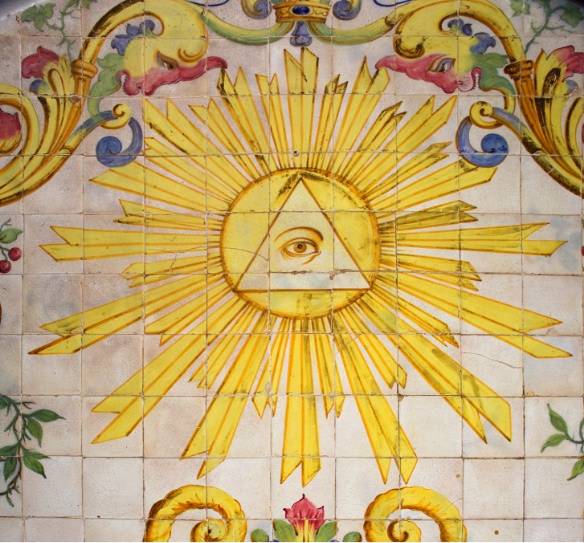
The Venerable
The Venerable should run his Lodge with Wisdom, represented by the Triangle containing the Eye of Knowledge and solar rays so called the All-Seeing Eye or the Radiant Delta which is a symbol of the Supreme being and his wisdom to lead.

The Secretary
The Secretary, who, according to the Masonic Regular Rite, sits at the Orient, at the Venerable’s right side, is considered the light that enlightens the Lodge; he is fifth in the Lodge´s hierarchy. His duties are to run the Lodge, read and write session minutes, keep the Lodge’s mail updated, hence being represented writing and according to Masonic Rite, on a pillar.
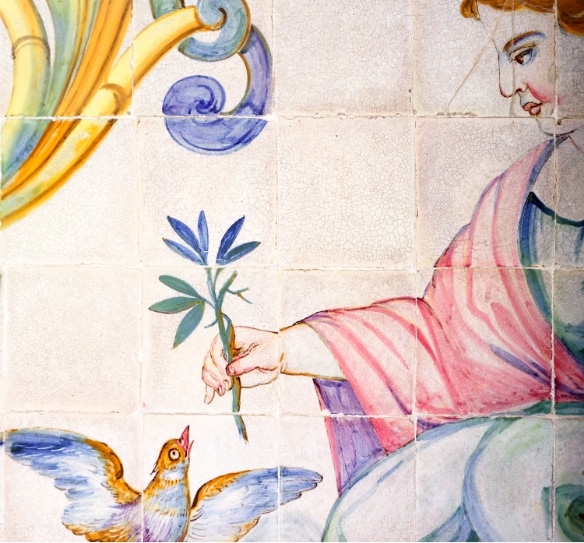
The Orator
The Orator, according to the Regular Rite, sits at the Orient, at the Venerable’s left side, and is fifth in the Lodge’s hierarchy. His main mission is to supervise the enforcement of the Masonic law and he is portrayed with a dove and an olive branch as peace and harmony symbols, which the Orator must always follow at the same time, ensuring Masonic law enforcement and justice hence the rod he holds in his left hand.
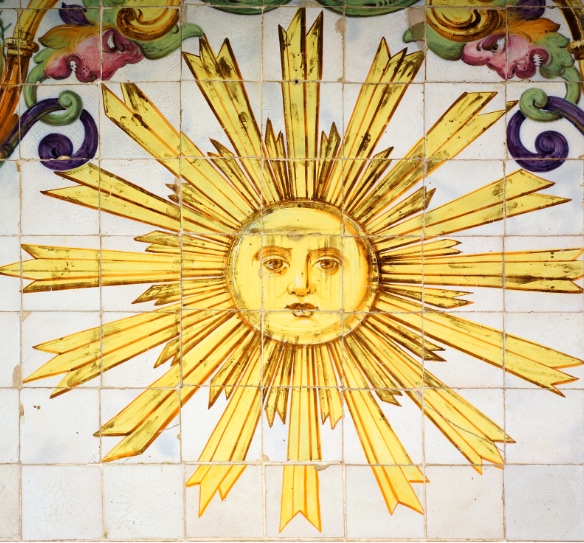
The First Vigilante
The First Vigilante is second in the Lodge hierarchy, right after the Venerable, according to the Regular Rite. The Sun represents Strength and is frequently portrayed as Achilles.
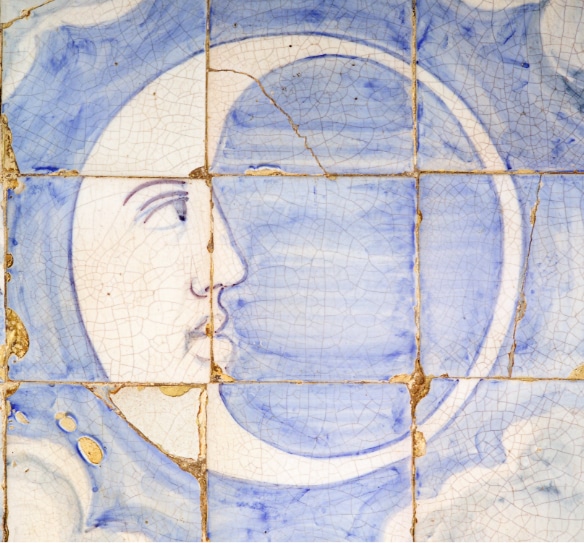
The Second Vigilante
The Second Vigilante is third in the Lodge’s hierarchy. He supervises the training of the Apprentices and tutors them. The Moon symbolizes Beauty and represents the Apprentice Pillar, an old Masonic legend.
THE REFECTORY
The old convent refectory became The Trindade Beer Factory. In 1836, since The Atrium was too small to house all the customers, it was extended to this room. Its walls are decorated with beautiful Portuguese painted tiles. The ceiling was painted by Vale with geometric motives in dark colors, but unfortunately was lost in further refurbishments.
The Four Seasons’ painted tile panels in the Refectory Hall illustrate its relation to the Masonic celebration of solstices and equinoxes. Currently there are only three seasons on display since the panel representing Winter was dismantled in the late 19th century to allow for the reopening of a hidden door connecting the Refectory to the Cloister.
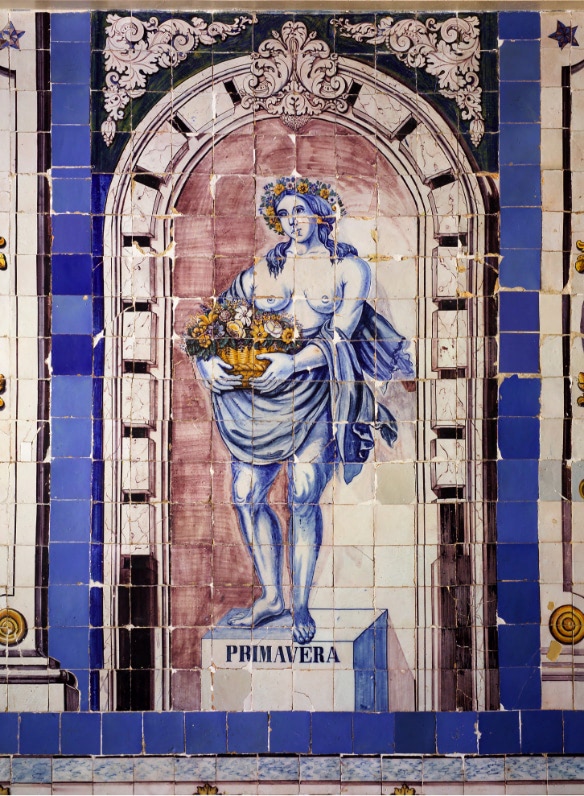
Spring
The Spring Equinox, around 21st March, was the beginning of the new Masonic year. First entries in many Masonic session’s minutes books from the 19th century are made on the Spring Equinox Day.
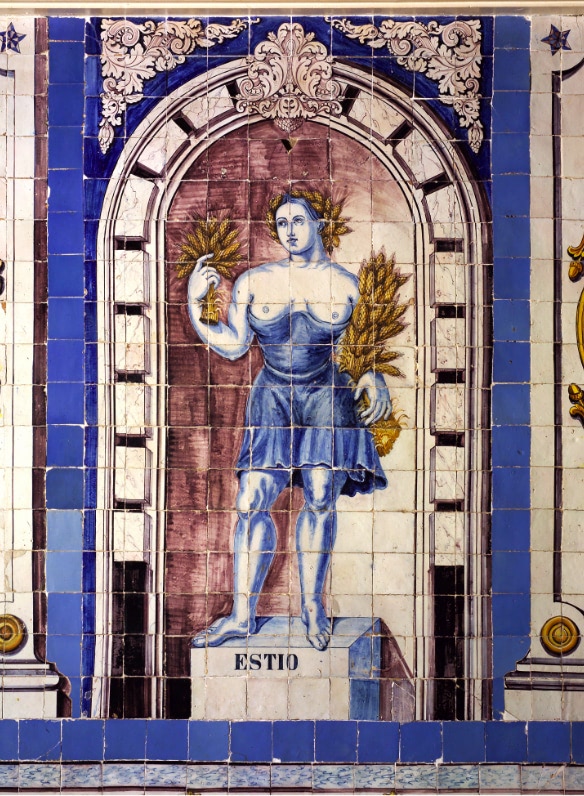
Summer
The Summer Solstice – around 21st June – is celebrated by the Freemasons’ patron, on St John the Baptist Day, 24th June.
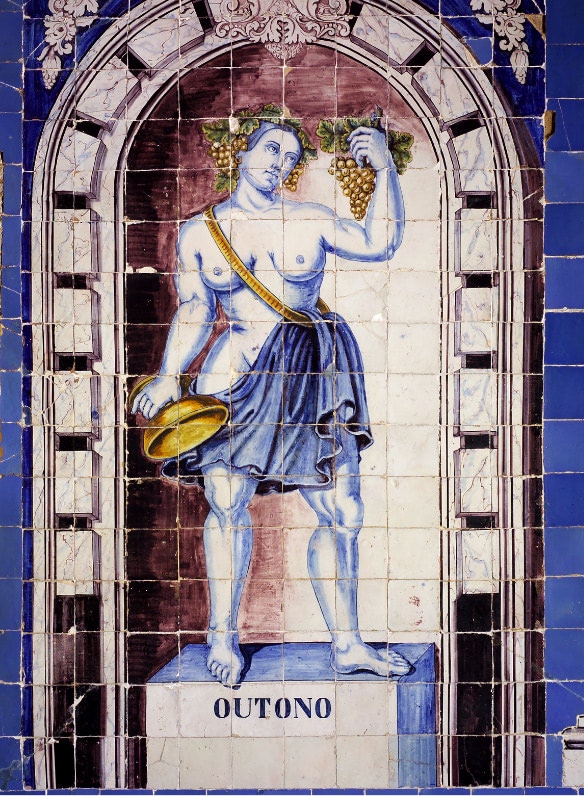
Autumn
The Autumn Equinox (around 22nd September) was an annual Masonic milestone marking the beginning of the year’s second semester.
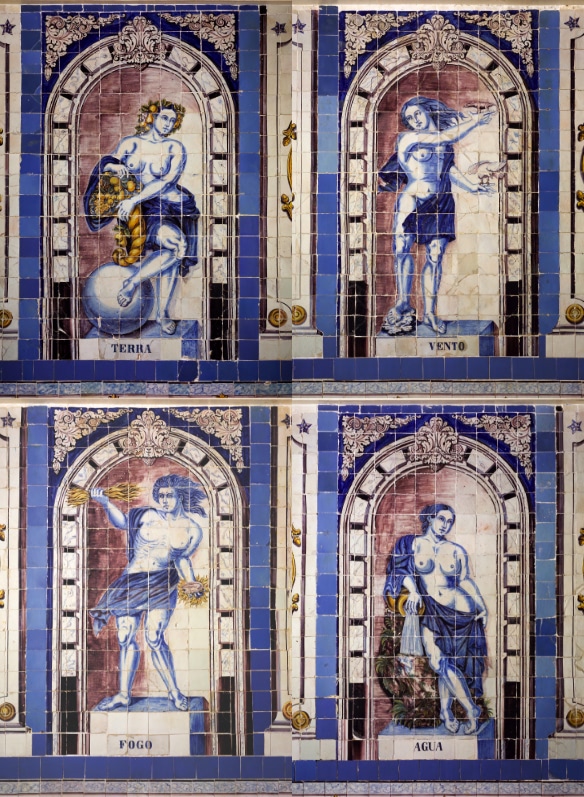
Earth, Wind (Air), Fire and Water
The Four Element panels displayed in the north wall of Trindade’s Refectory Hall have been revered by many civilizations and religions and are also related to Masonic rituals in different occasions, namely in the initiation’s 1st level and also the 12th and 29th according to the Ancient and Accepted Scottish Rite. The Masonic meaning of the Four Elements concerns the Four Ages of Life: Earth being the first Age, of Birth and Childhood; the second, the Age of Air (Wind), of Youth and its tumultuous passions; the third, the Age of Water, Adulthood enduring fewer obstacles and the Age of Fire, of Maturity when knowledge and experience are reached.
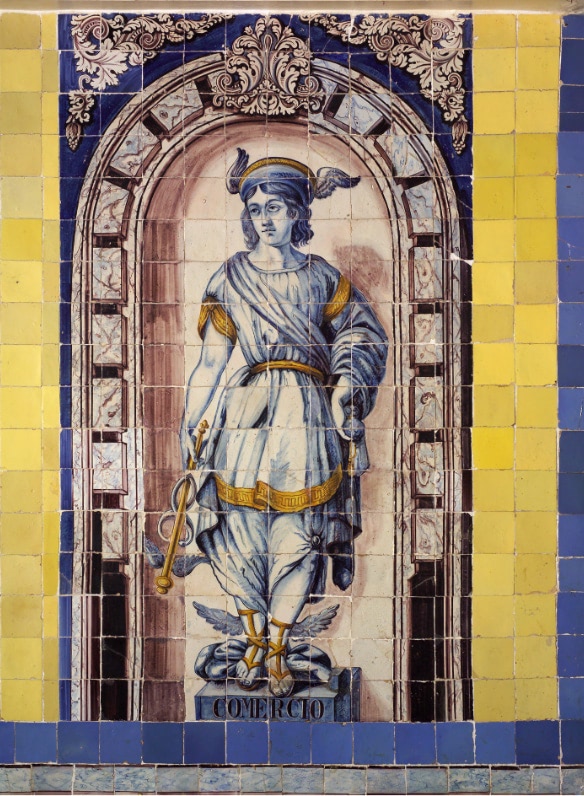
Trade and Industry
The Industry and Trade allegories in the east wall of Trindade’s Refectory Hall express the importance accorded to them in the development of the country and society in both the Liberal and Republican’s political manifestos during the 19th and early 20th centuries.
THE CLOISTER
The old cloister was built around 1756. The garden’s patio, the arches and the old façades are still visible. The grandeur of Trindade’s cloister gives us an idea of the grandiosity of what was once one of the biggest and most important of Lisbon’s convents. The columns and arches stonework are plain, but wide and elegant – it reminds us of the Convent’s wealth during the 18th century. It is through the dimensions of this Cloister, and also the dimensions of the Sala do Refeitório, that we can still feel today the scale of the building that housed one of the largest and most important Convents in Lisbon. The columns and arches stonework are plain, but wide and elegant – it reminds us of the Convent’s wealth during the 18th century.
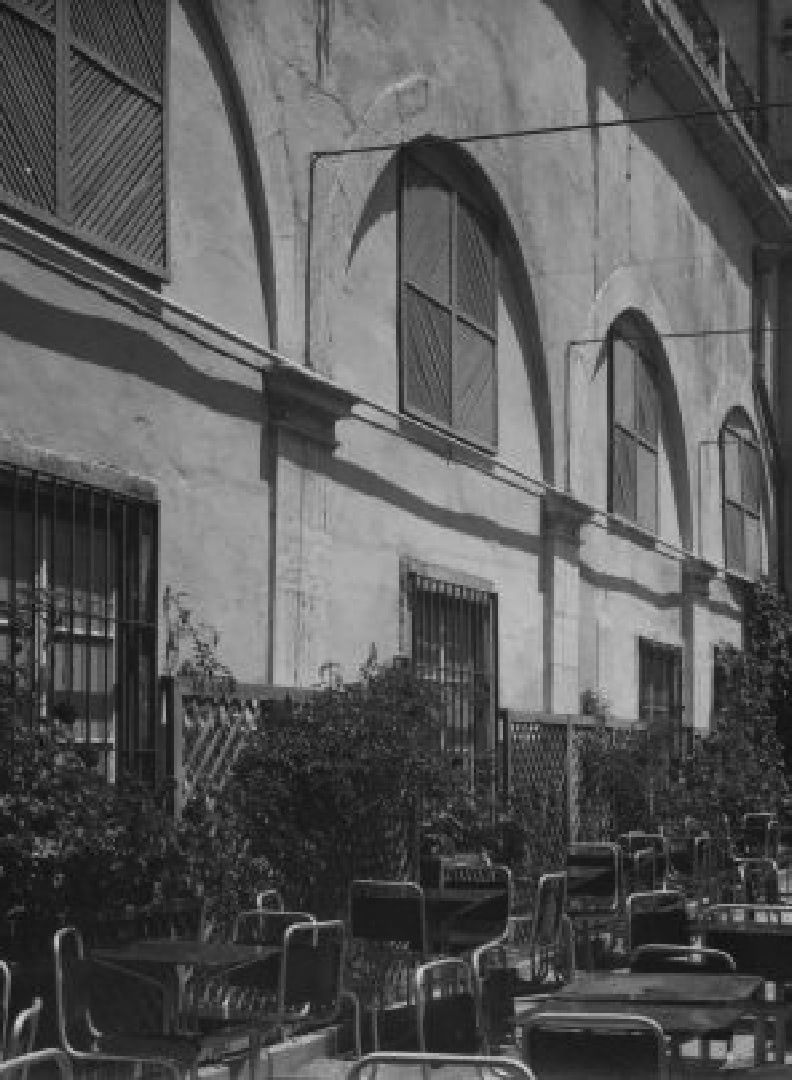
MARIA KEIL’S ROOM
First the former convent’s church and, for approx. seventy years (between 1866 and 1935), the Trindade Brewery Factory. When the brewery closed, this room was empty for more than a decade. In 1946, thanks to post-war increase in demand, construction work was done and this room reopened. The renowned artist Maria Keil (hence its name) was invited to redecorate the new space. Maria was born in the South of Portugal, studied fine arts and later married the prominent architect Francisco Keil do Amaral. Her unique panels, inspired by the Portuguese stone pavement style (’calçada portuguesa’) and ancient Roman temples, are part of the Portuguese Modernist movement’s history. Between 1959 and 1972, the Maria Keil’s room was split from Cervejaria Trindade and was for that period an independent restaurant named Folclore, more focused on tourism and Popular Portuguese Art. In 1973, Folclore closed and Maria Keil’s room was once again reintegrated in Cervejaria Trindade.
Her unique panels, inspired by the Portuguese stone pavement style (’calçada portuguesa’) and ancient Roman temples, are part of the Portuguese Modernist movement’s history.
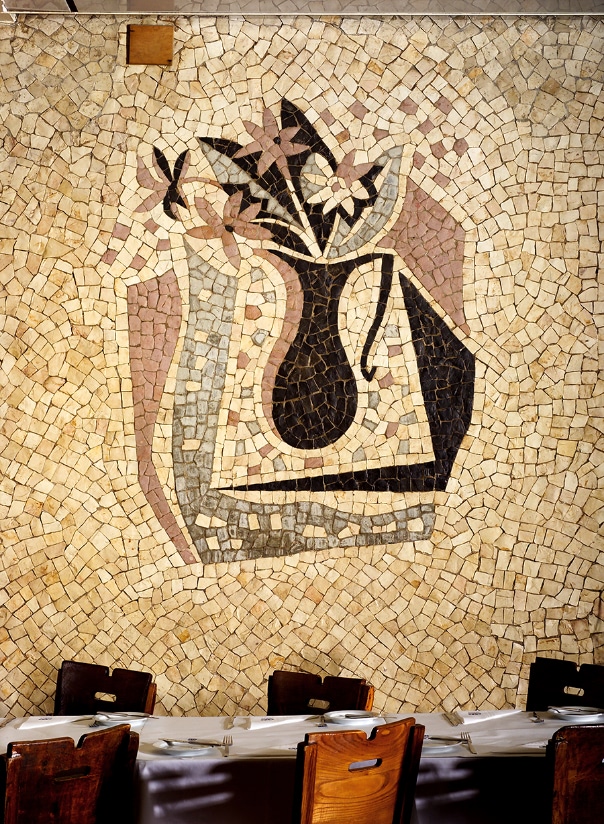
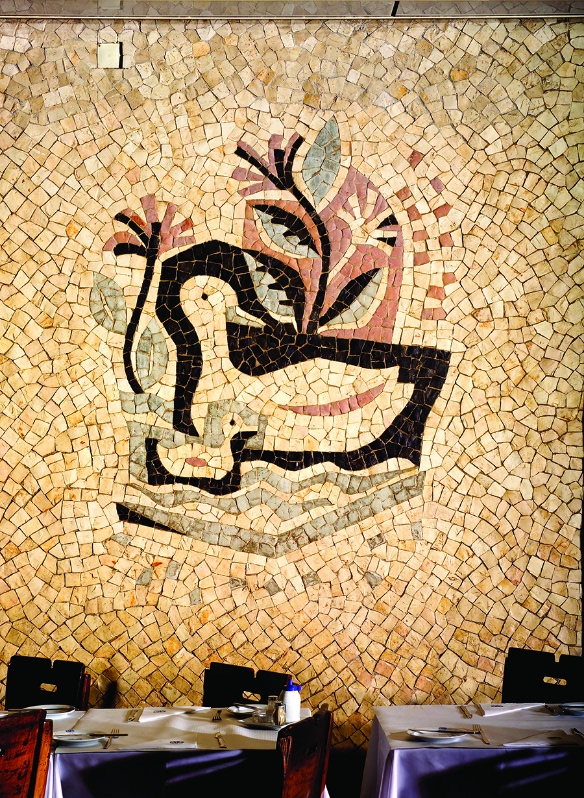
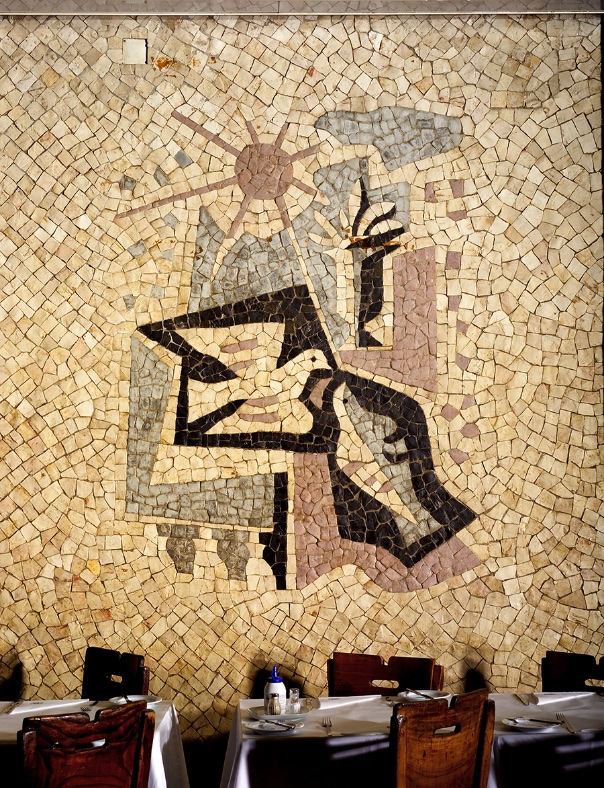
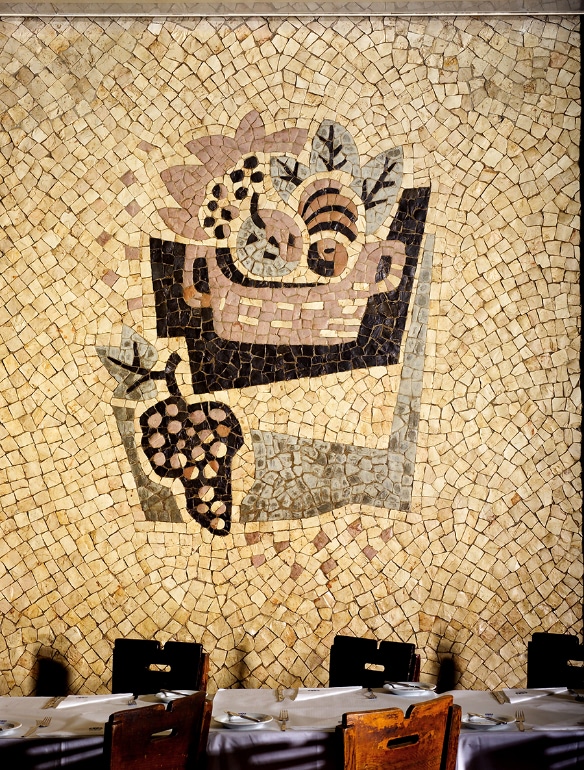
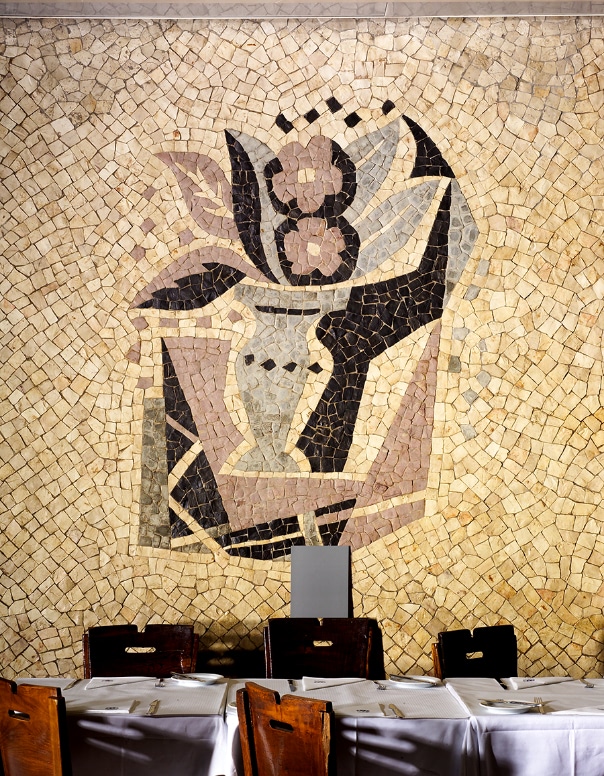
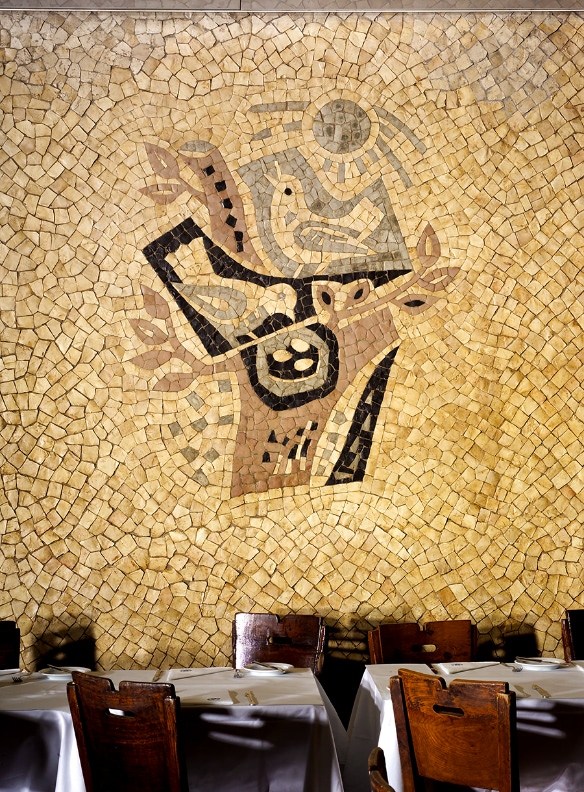
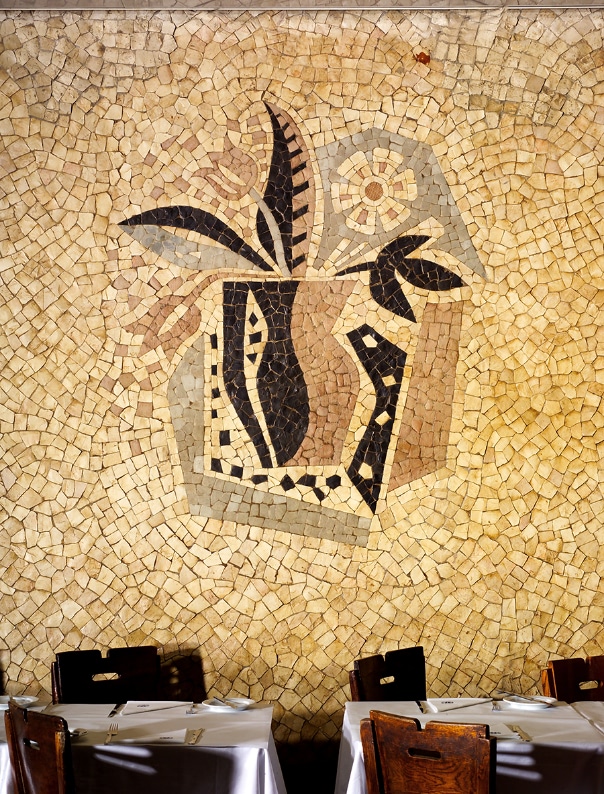
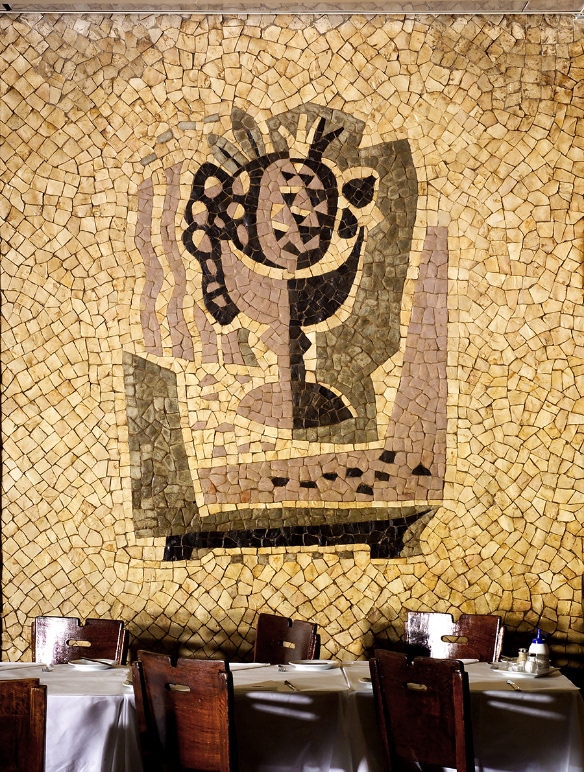
THE ARCHES
In this room the old north gallery of the original Cloister, reconstructed after Lisbon’s major Earthquake, is still visible. This was an extensive reconstruction, nearly total. From the original Convent building, inaugurated 430 years prior by Queen Saint Elizabeth, little was left. Popular tradition marked this event with the idiomatic expression cai o Carmo e a Trindade (Trindade and Carmo [convent] fall) – when something terrible happens.
